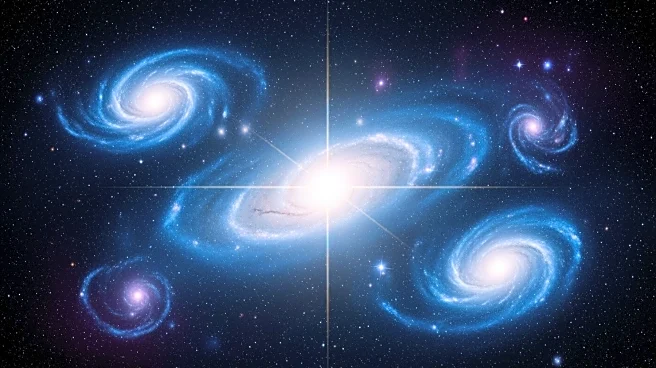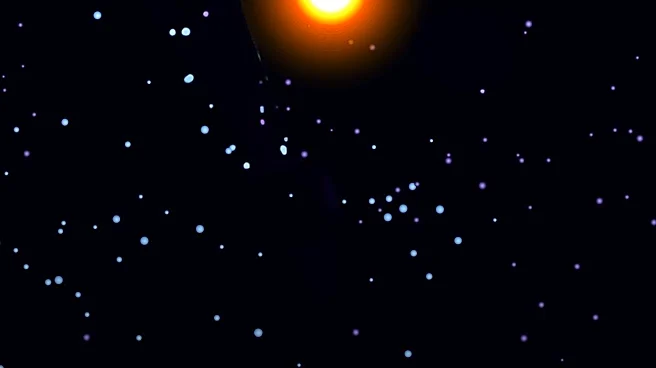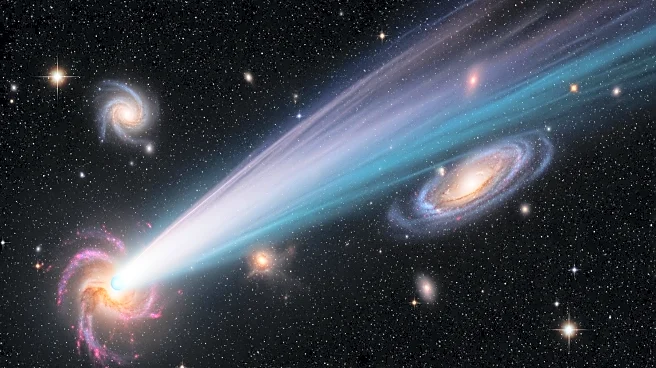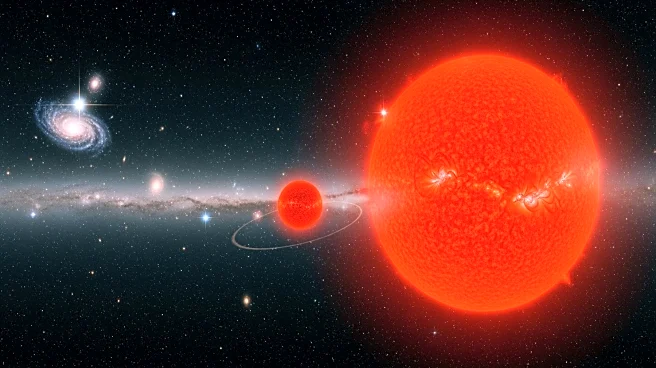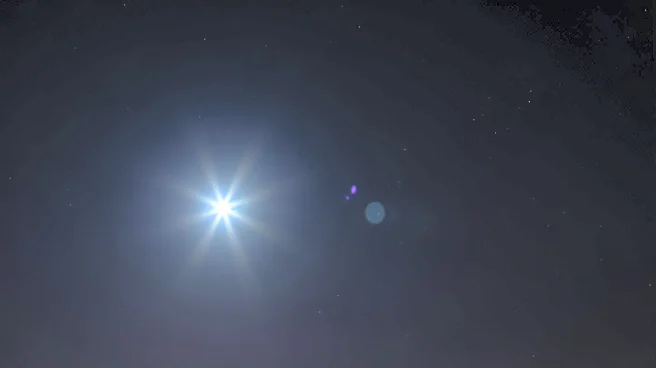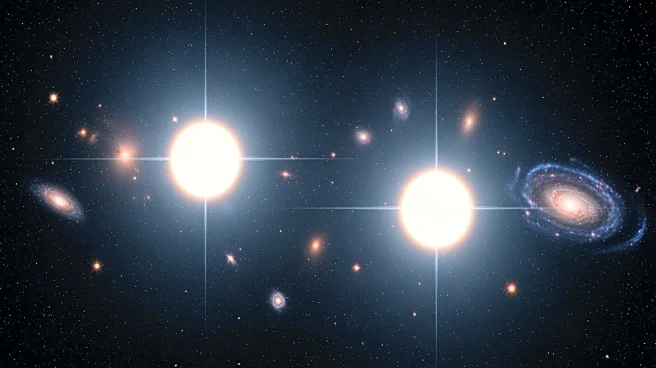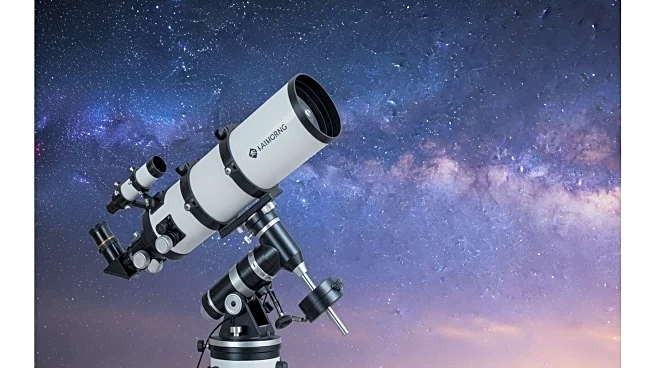What's Happening?
Fomalhaut, known as the 'Royal Star of the South,' is reappearing in the autumn skies, offering a unique viewing opportunity for stargazers. Historically recognized by Persian astronomers as one of four
'royal stars,' Fomalhaut is situated in the constellation Piscis Austrinus, the Southern Fish. It stands out due to its isolation in a largely empty patch of sky, making it a prominent feature during autumn evenings. The star's name, meaning 'mouth of the fish' in Arabic, reflects its position within the constellation. Fomalhaut's historical significance is complemented by modern scientific intrigue, as it was once thought to host an exoplanet, Fomalhaut b, observed by the Hubble Space Telescope. However, subsequent analysis suggests the bright spot may be a clump of dust or gas, adding complexity to its celestial narrative.
Why It's Important?
Fomalhaut's return to the autumn sky is significant for both historical and scientific reasons. As a 'royal star,' it has been a point of reference for astronomers and navigators for centuries, marking seasonal changes and aiding in celestial navigation. Its visibility in the Northern Hemisphere during autumn evenings provides a unique opportunity for stargazers to connect with a piece of astronomical history. The scientific debate surrounding Fomalhaut b highlights the challenges in exoplanet detection and the complexities of planetary formation, offering insights into the processes that govern our universe. This star's dual role as a historical beacon and a subject of scientific inquiry underscores its importance in both cultural and scientific contexts.
What's Next?
As Fomalhaut continues to be a subject of interest, astronomers may conduct further observations to clarify the nature of Fomalhaut b and its surrounding debris. Advances in telescope technology could provide more definitive answers about the star's potential planetary system. Additionally, stargazing enthusiasts are encouraged to use mobile apps to locate Fomalhaut in the sky, enhancing their viewing experience. The star's prominence in the autumn sky will likely inspire continued interest and study, both for its historical significance and its role in ongoing astronomical research.
Beyond the Headlines
Fomalhaut's solitary presence in the sky during autumn evenings evokes a sense of melancholy and reflection, mirroring the seasonal transition. Its role as a navigational aid highlights the practical applications of astronomy in everyday life, while its historical and mythological significance enriches cultural narratives. The star's layered identity as both a celestial marker and a scientific puzzle invites deeper exploration into the ways humans interact with and interpret the cosmos.
